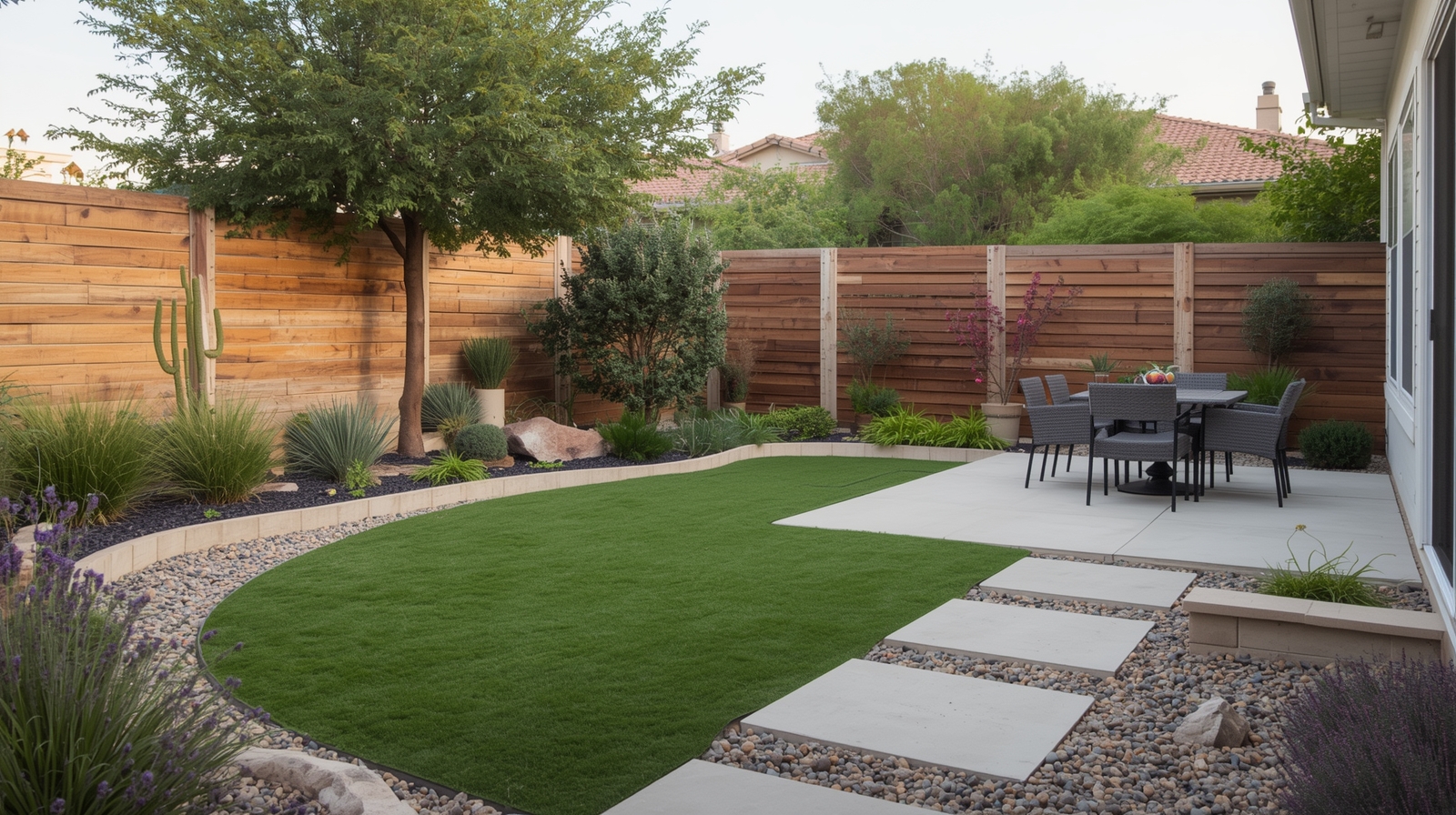You don’t need acres of land to create a beautiful backyard. In fact, some of the most charming and functional outdoor spaces are tucked away behind smaller homes or nestled into tight city lots
1. Think Vertically
When horizontal space is limited, look up. Vertical gardening allows you to grow more in less space, and it adds visual interest to your backyard. Try these ideas:
- Hang wall planters or tiered shelves for herbs and flowers.
- Use trellises or lattice panels for climbing plants like jasmine or clematis.
- Install a vertical garden wall — a lush backdrop that doubles as a privacy screen.
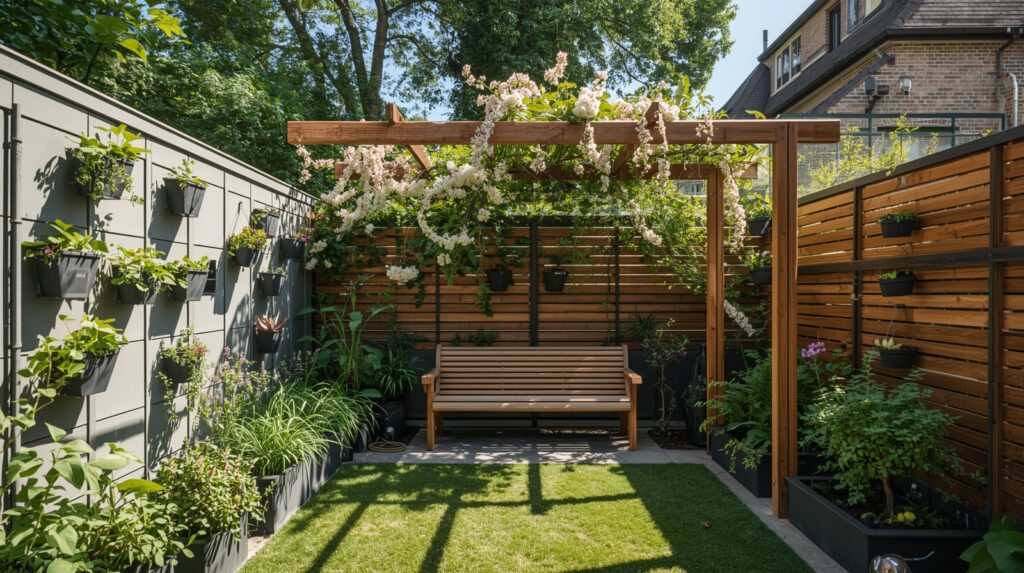
2. Create Zones, Even in a Small Space
Dividing your backyard into functional areas can actually make it feel larger. Use different materials or landscaping features to define zones:
- A small gravel patio for dining.
- A raised wooden deck for lounging.
- A corner with a fire pit or reading nook.
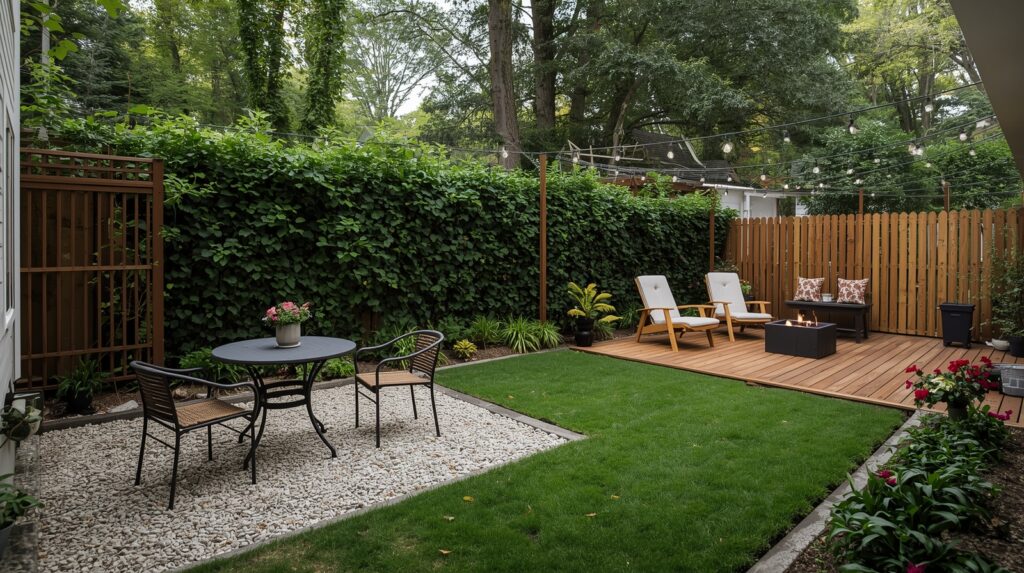
3. Choose Multi-Functional Furniture
In tight spaces, every piece counts. Choose outdoor furniture that serves more than one purpose:
- Benches with hidden storage.
- Folding tables and stackable chairs.
- Ottomans that double as extra seating or side tables.
Compact furniture doesn’t mean sacrificing comfort or style. Look for weather-resistant pieces in lighter tones to keep things feeling airy and open.
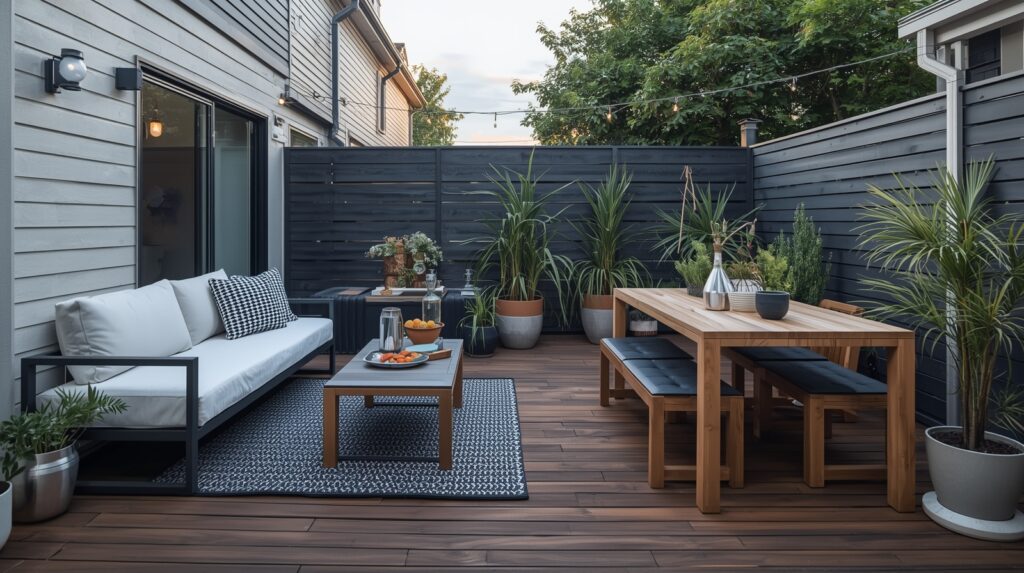
4. Embrace Container Gardening
If you’re short on planting beds, container gardening is your best friend. Use pots, troughs, and window boxes to bring in color, texture, and even fresh produce.
Mix different sizes and materials — terracotta, ceramic, or modern concrete planters — for a layered look. Group them in odd numbers for a more organic feel.
Bonus tip: Add wheels to larger planters so you can move them around to follow the sun or change the layout with the seasons.
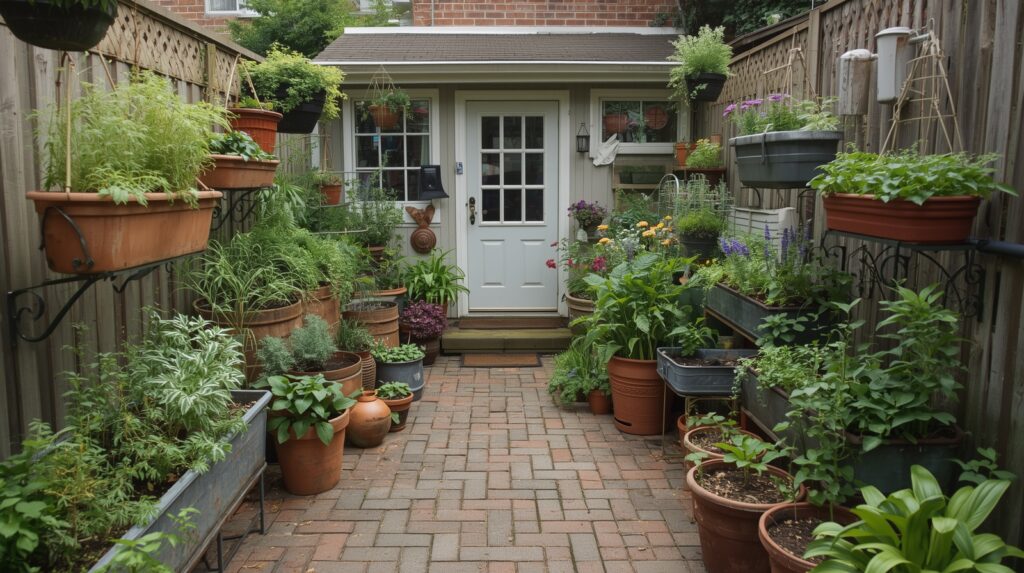
5. Use Mirrors and Lighting to Expand the Space
Small backyards can feel closed in, especially with fencing or surrounding buildings. Mirrors and lighting help bounce light around and visually expand the space.
- Hang an outdoor mirror on a fence or wall (just make sure it’s weatherproof).
- Use string lights, solar lanterns, or LED pathway lights to create a warm glow in the evenings.
- Place uplighting at the base of trees or large pots to add drama and height.
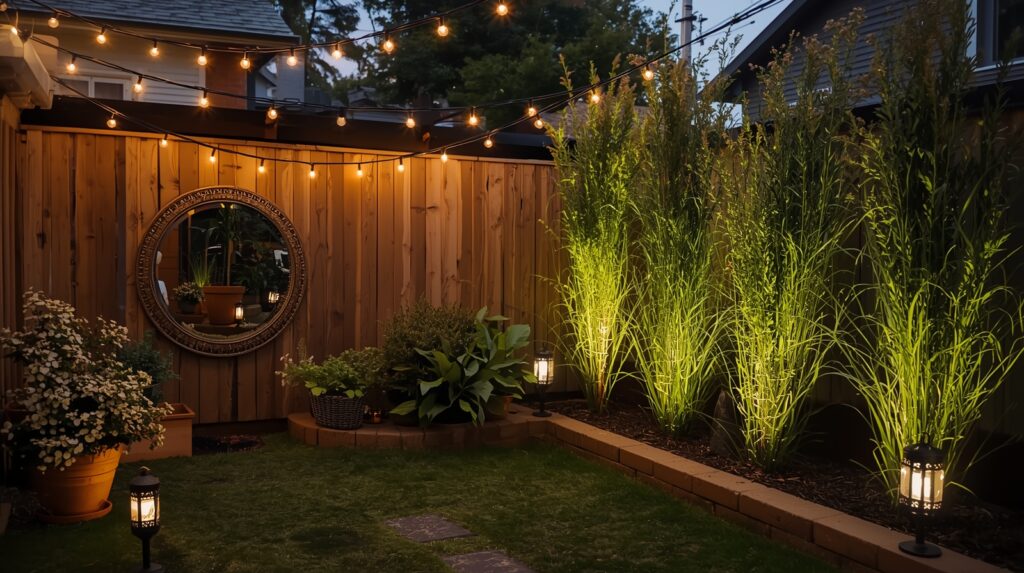
6. Keep the Plant Palette Simple
Too many colors or types of plants can make a small space feel cluttered. Stick with a simple color palette and repeat plant types for a cohesive, calm vibe.
- Mix evergreen shrubs with flowering perennials.
- Add pops of color with seasonal blooms or decorative pots.
- Use grasses or low-maintenance ground covers to soften hardscapes.
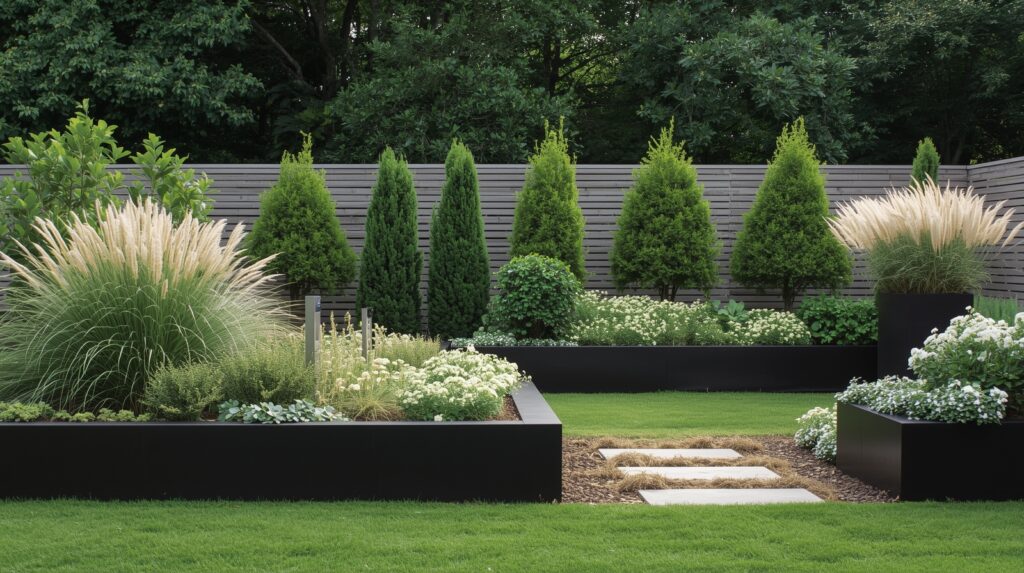
7. Incorporate a Water Feature (Yes, Even in a Small Yard!)
You don’t need a sprawling pond to enjoy the soothing sound of water. Compact fountains, bubbling urns, or even wall-mounted water features can create a tranquil focal point in a small space. Plus, they attract birds and add a sense of calm.
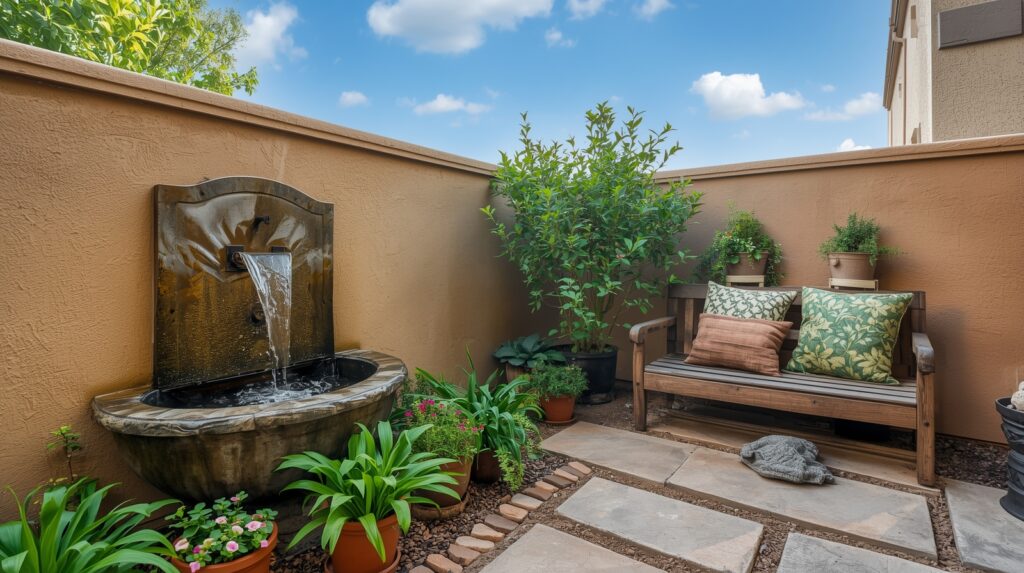
8. Go Low-Maintenance with Smart Materials
If you’re busy or don’t love gardening, use low-maintenance landscaping materials:
- Artificial turf or ground cover instead of grass.
- Gravel or decomposed granite paths.
- Native plants that thrive in your local climate with minimal watering.
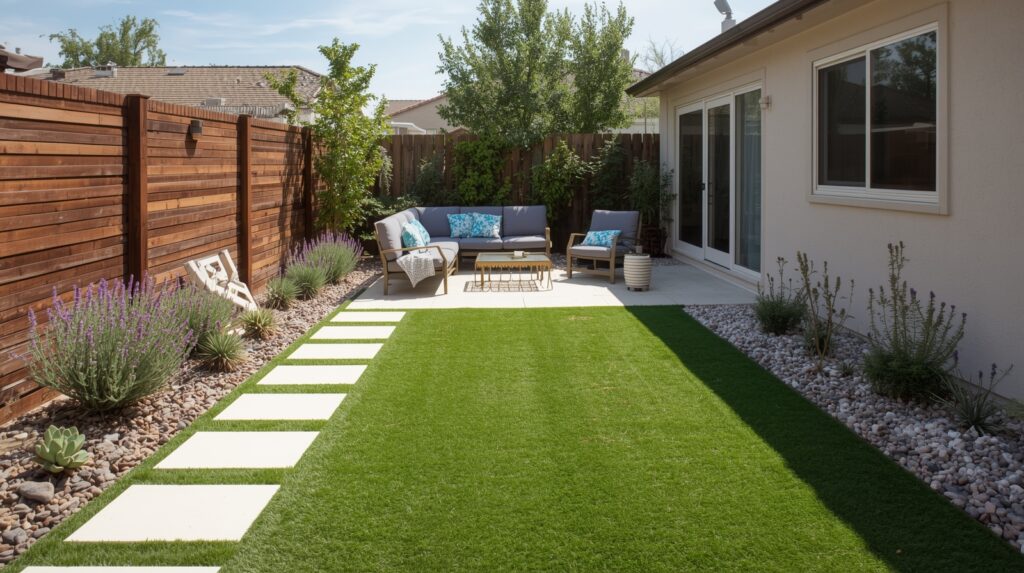
A little planning now can mean a lot less upkeep later.
FAQs:
1. How can I make my small backyard look bigger?
You can make a small backyard look bigger by using design tricks like vertical gardening, mirrors, light-colored furniture, and defined zones. Keeping the space clutter-free, using a cohesive color palette, and strategically placing lighting also help create the illusion of more space.
2. What are the best plants for small backyard landscaping?
Choose compact, low-maintenance plants like:
- Boxwoods or dwarf shrubs
- Ornamental grasses
- Perennials like lavender or salvia
- Climbing plants like clematis or jasmine
Use containers or raised beds to control growth and keep the space tidy.
3. Can I have a garden in a small backyard?
Yes! Container gardening and vertical gardens are ideal for small backyards. Use pots, hanging baskets, wall planters, or raised beds to grow herbs, vegetables, and flowers without taking up too much space.
4. How do I design a backyard on a budget?
Start with what you already have. Repurpose old furniture, use gravel or mulch instead of expensive pavers, and opt for native plants that require less maintenance. DIY projects like building planters, benches, or a simple fire pit can save money and add personal charm.
5. What is the best layout for a small backyard?
The best layout depends on your lifestyle, but generally:
- Create clear zones (e.g., seating, dining, garden)
- Leave open space in the center to avoid a cramped feel
- Use vertical elements to draw the eye upward
- Keep walkways clear and functional

